Opinion: Do We Need Size-Specific Chainstays?
A growing number of bikes are coming out with size-specific chainstays, and the effect that chainstay length has on bike handling is a major point of discussion in reviews. Size-specific chainstay lengths (where larger frames get longer chainstays) make a lot of sense intuitively - if the front-end gets longer, the back end should too, right?
But in some cases, the idea is in danger of becoming more of a box-ticking exercise than something that tangibly benefits the rider. Many of the bikes that offer this feature don't make a big enough change to noticeably affect the handling. And even for those that do, the ideal chainstay length for a given rider depends on so much more than maintaining some particular ratio of front-center to rear-center.
To understand why, we first need to talk about what effect chainstay length has on a bike's handling.
Chainstay Length 101
Also known as the rear-center, chainstay length is the horizontal distance from the rear axle to the bottom bracket. When you stand on the bike, almost all of your weight is on your pedals - only a small amount can go through your hands and the handlebars. This means the weight distribution between the front and rear wheels is largely determined by the ratio of the chainstay length to the wheelbase.
For example, in the case of the Ibis HD6 from this year's field test, the size 3 has a chainstay length of 435 mm and the wheelbase is 1,256 mm (pretty typical numbers for a size medium these days). So, the chainstay is 34.6% of the wheelbase, which means 34.6% of your weight will sit on the front wheel and 65.4% will sit on the rear wheel.* In size 5 (effectively XL), the wheelbase is 1,328 mm but the chainstay remains at 435 mm, so the weight distribution becomes 32.8% on the front.
*I'm ignoring the suspension sag here (which affects the wheelbase and chainstay length) and the weight of the bike. This is a simplification, but it's close enough to get a sense of what's happening. I'm also assuming no downward force is going through the rider's hands, both for simplicity and because it's very hard for most riders to put a significant amount of force through the handlebar consistently. Try standing on your bike with your front wheel on a bathroom scale - it's surprising how much you need to lean on the handlebar to make a significant difference to the weight on the front tire.
That may not sound like a huge difference, but if you weigh 100 kg, then on a size 3 there would be 34.6 kg of force pressing your front tire into the dirt; on a size 5, there would be 32.8 kg. That's an absolute decrease of 5.2% load on the front tire. So, if you jumped from the medium to the XL without adjusting your tire pressure, fork setup or riding style, the front wheel would be less pressed onto the trail in the latter case.
But if we fitted longer chainstays in larger sizes, we could maintain the same downward pressure on the front wheel (for a given rider and body position) across the sizes. But how much longer?
Scale Matters
Let's say we wanted every size of Ibis HD6 to have the same weight distribution as the S3 (medium). This implicitly assumes that the weight distribution is "ideal" in the size medium, which seems a little arbitrary, but let's go with it for now. Running the numbers, that would involve the S5 having a 473 mm chainstay (which is unheard of), while the S1 would need a 406 mm chainstay (which is unfeasible, as chainstays can't get much shorter than 435 mm without running into issues with tire clearance and chain angle).
In other words, the chainstay length would have to change by 15-20 mm per size to maintain a consistent weight distribution. To my knowledge, only Forbidden is getting close to that.
Looking at it another way, YT is one of the brands ticking the size-specific chainstay box with their Capra, but their chainstays only grow by 5 mm across the range (438 mm for small to large & 443 mm for XL and XXL). On the XL, the weight distribution would have been 34.4% on the front if it had the same (438 mm) chainstay as the smaller sizes, but the longer chainstay changes that to 34.7%. That's a difference of 0.3% of the rider's total weight, or the absolute amount of load on the front tire goes up by 0.7%. Despite the change in chainstay length, the small still has 7% more front tire load than the XXL.
In short, it's a token effort. But it's not just YT; most brands currently offering size-specific chainstays are only making tiny changes - the Yeti SB160 changes by 2 mm per size, which doesn't seem worth the effort to me.
How Does Chainstay Length Affect Cornering?
Okay, so making the chainstays much shorter on small sizes isn't feasible, and making them 5 mm longer on the biggest sizes doesn't do much, but maybe making the chainstays a lot longer on bigger sizes is worth doing. After all, head tubes can't be made any shorter than about 100mm, so many bikes use the same length head tubes on XS, S and medium, but the large and Xl still benefit from bigger head tubes. Could we see a similar approach with chainstay length, and if so, would that improve cornering traction?
Making chainstays longer in an XL will result in more pressure on the front tire for a given rider position, but how this translates to reducing the risk of washing out in a turn is more complicated than you might think.
To illustrate the point, let's take things to extremes and imagine you have a bike with a 25:75 rearward weight distribution and another with a 50:50 weight distribution. Just for context, that would be like fitting our S3 Ibis from earlier with a back-end that was either 270 mm or 820 mm long.
Again ignoring the weight of the bike, sag, and any weight on the handlebar, and assuming a 100 kg rider for easy maths, there would be 25 kg of downward force on the front tire for the first bike, while the second would have 50 kg on each wheel.
You might think that since the second bike has twice as much weight on the front tire, it will have twice as much front-wheel grip, so you can corner twice as hard without the front wheel sliding. But that's not the case.
This video explains why a rearward weight bias requires more lateral cornering force from the rear wheels and less from the front.
Imagine going around a big flat turn with a constant radius at a constant speed (this is called steady-state cornering). The friction between both tires and the ground provides a lateral force towards the inside of the turn (called centripetal force) that keeps you turning and stops you from heading off in a straight line. If you have a 50:50 weight distribution, so the centre of gravity (COG) is halfway along the wheelbase, both tires provide an equal amount of this lateral force. If you have a 75:25 rearward bias, so the COG is 75% of the way along the wheelbase towards the rear, then the rear wheel must provide 75% of this lateral force, and the front wheel only provides 25%. This is because, with the COG closer to the rear wheel, there's a shorter lever arm between the tire and the COG, so the rear tire has to provide more lateral force to keep from sliding out.
But the front wheel also has 25% of the vertical load (weight) and the rear has 75%. You may remember in high school being taught that the friction between two surfaces is proportional to the force pressing them together. So, the bike with the 25/75 weight distribution has half the load on the front tire, so it can produce half the lateral force compared to the bike with a 50/50 weight distribution. But with the COG closer to the rear axle, the front wheel only needs to provide half as much lateral force to get around the corner. This means that if lateral grip is proportional to vertical load, then these factors cancel out and both wheels will be equally prone to sliding. In other words, the bike with the rearwards weight bias isn't more prone to understeering (front wheel sliding) than one with equal bias.
Does this weight distribution doesn't matter? Unfortunately not.
A weight distribution closer to 50/50 is better for cornering because of something called tire load sensitivity.
In reality (despite what my physics teacher taught me) grip usually isn't proportional to vertical load. On hard surfaces, such as asphalt, the ratio of grip to load decreases with increasing load. In other words, if you double the load on the tire, the grip it can provide is less than double. So, in our extreme case of a 75% rearward weight bias, it's the rear wheel that would be more prone to sliding, not the front, because it has to provide 75% of the lateral force but it has less than 75% of the available grip.
In contrast, on soft surfaces like mud and sand, the ratio of grip to load generally increases with increasing load, so if you double the load on the tire the lateral grip will more than double. Thanks to Steve Matthews of Vorsprung Suspension for pointing this out to me and sharing his knowledge more generally. So in this case, a bike with 25% of its weight on the front wheel will have less than 25% of the available lateral grip, so it will be most likely to slide.
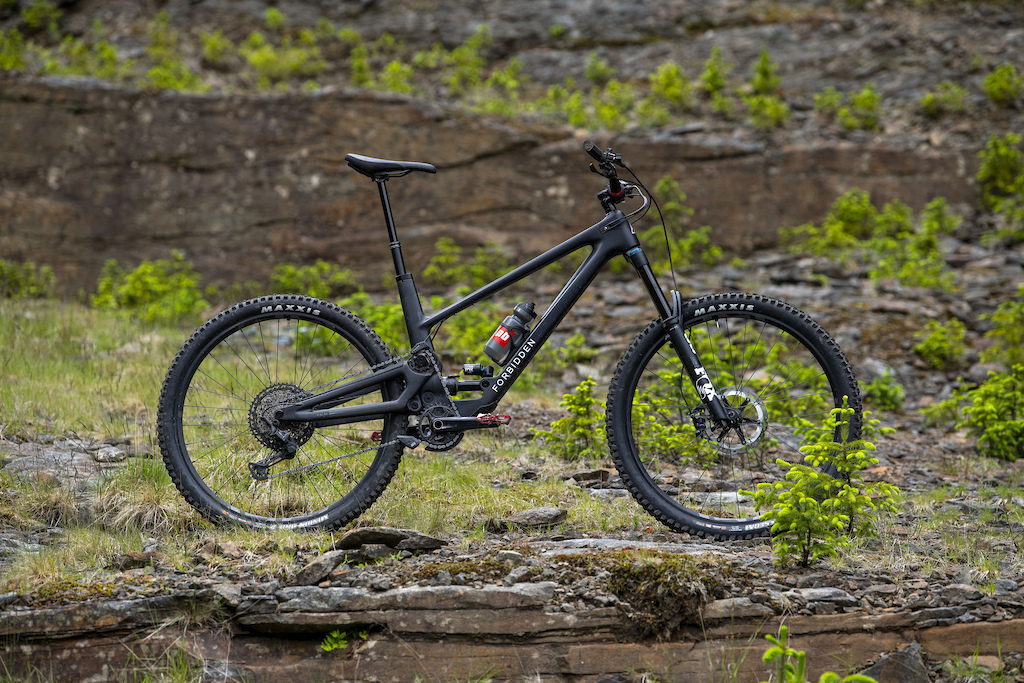
The Forbidden Dreadnought does size-specific chainstays properly, with a 464 mm rear center in size XL that grows to around 480 mm at sag. When I reviewed it, this delivered downsides as well as upsides.
Putting it All Together
So to summarise, getting closer to a 50:50 weight distribution helps the bike to handle more consistently. Otherwise, either the front or rear wheel could be more prone to sliding out, depending on the terrain. It's not as simple as saying that having too much weight on the rear wheel will always cause the front wheel to wash out more often. It's certainly not the case that getting X% more load on the front tire will allow you to corner X% harder.
While this article has already gone on long enough, there's still much more to this topic, such as the ability of the rider to actively lean on the handlebar or the effect of braking to move the weight distribution closer to 50:50. Then there's the fact that most bikes use different tires on the front and rear - having a stiffer tire casing on the rear with a more aggressive tread on the front can somewhat compensate for a rearward weight bias. Also, people on smaller sizes generally have more upright riding positions and those on larger bikes have more forward-leaning riding positions due to a shorter stack height relative to reach, so the rider's weight will generally be further forward relative to the bottom bracket with a larger frame size.
The main point here is that you need to make the chainstay a lot longer to get the weight distribution a little bit closer to ideal. As a rule of thumb, you'd need to add 15-20 mm to the rear center per frame size if you want to keep the weight distribution the same. A 5-10 mm difference across the entire size range isn't doing much. Adding 10 mm to the chainstay length will only move the weight distribution of a typical bike from around 34% to 34.5% on the front (ignoring rider input).
In the past, I've tested several bikes with chainstay lengths that are adjustable by 10 mm and hastily written that I can feel a difference and prefer the longer setting. But thinking about it more deeply, extending the chainstay by 10 mm will increase rear-wheel travel by around 2.3% and reduce the spring and damping rates at the rear wheel by around 5%. If you don't adjust the shock settings, this is the main difference you'll notice. Not only that, with a 10 mm longer chainstay there will be about 1.5% more load on the front tire for a given riding position. While this difference is probably negligible, in theory, this extra load will add to the risk of tire squirm, burps and dings, so it should be compensated for by increasing the front tire pressure by a similar percentage. Otherwise, the effect is similar to running the tire softer, which will increase grip when the tire is lightly loaded, but increase the risk of squirming when it's heavily loaded. If the suspension settings and tire pressures are adjusted to compensate for these considerations, the advantage of a longer chainstay will be diminished.
In contrast, if you get your weight forward in a flat corner by leaning on the bar, you're temporarily adding load to the front tire, so it's heavily loaded relative to the tire pressure and generating good grip, but you can revert to a more neutral/rearward position in rock gardens and berms to prevent tire squirm or burping. In other words, increasing the chainstay length is not the same as riding with an aggressive body position.
With dramatically longer chainstays (such as the XL Forbidden Dreadnought with a rear center that stretches to 480 mm at sag), I think the weight distribution is noticeably better in flat turns, but there are downsides to consider too, including a shallower breakover angle (assuming the BB height stays the same); a tripping sensation on steep, technical sections; and a slightly longer overall wheelbase which requires more steering input in tight turns.
But the main drawback people notice with long chainstays is that they make it harder to manual. To lift the front wheel off the ground, you need to get your center of gravity behind the rear axle; moving the axle even 10 mm further back makes it noticeably harder to do this, and that can be a big problem for some riders.
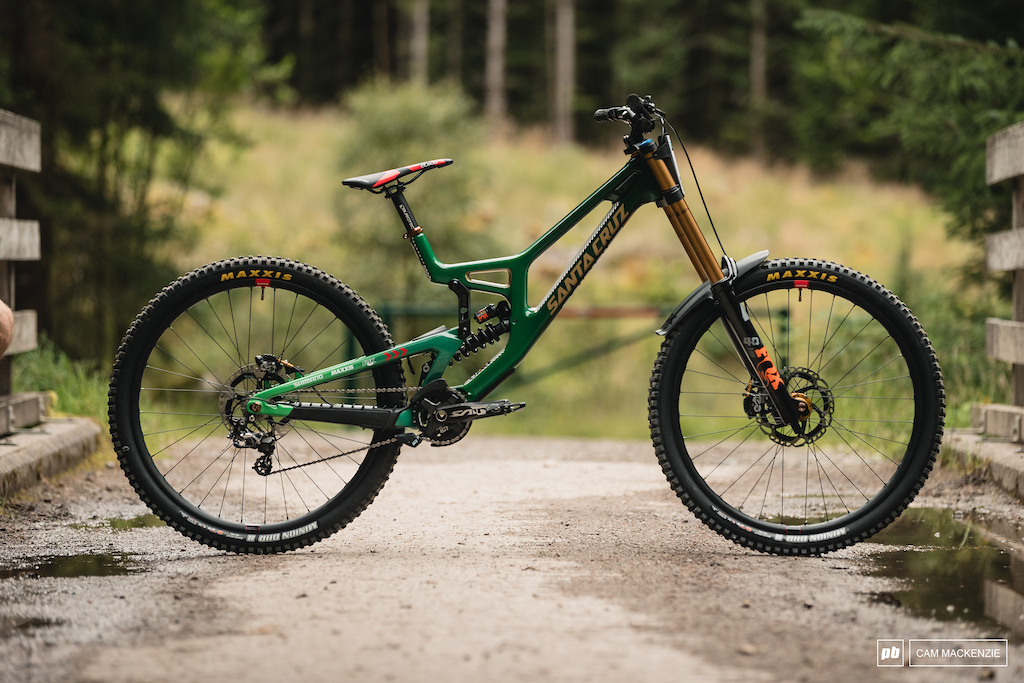
The GOAT appeared to be running his XL V10 in the shorter chainstay setting at Fort William this year (456 mm) despite experimenting with longer rear centers recently. Either way, it's nice to have options.
What's the Bottom Line?
So, in an ideal world, I'd suggest picking the longest chainstay that still allows you to manual comfortably. In general, this rule of thumb would mean taller riders running longer rear ends, but it also depends on the rider's weight, skill, and cockpit setup, as well as how they prioritize consistent grip versus ease of lofting the front wheel (racing versus jibbing). It's not about hitting some magical ratio of front-center to rear-center, because there's nothing magical about that ratio in any frame size, but rather that riders who have no trouble lifting the front wheel may as well benefit from a more balanced weight distribution and the more consistent grip that goes with it.
Forbidden's latest Supernought has a 20 mm adjustment range in addition to size-specific rear-ends, which I think is a great approach.
Adjustable chainstays are better than size-specific ones because riders can choose what works for them based on many factors including terrain and personal preference - not just frame size. But remember that the 5-10 mm adjustment that's currently being offered isn't going to make a big difference to weight distribution. It would be interesting to see a larger adjustment range (at least 10 mm in either direction) become available, perhaps in combination with size-specific back ends, but I wouldn't be surprised if some tall riders still prefer a more conventional chainstay length.
Acknowledgements
Thanks to Steve Mathews of Vorsprung Suspension, Dave Weagle and Joe McEwan of Starling Cycles for their help and advice with this article. While the opinions above are my own and don't necessarily reflect any of theirs, their insights were invaluable.
And of course, thanks to Taj Mihelich for the illustrations.
Author Info:
Must Read This Week
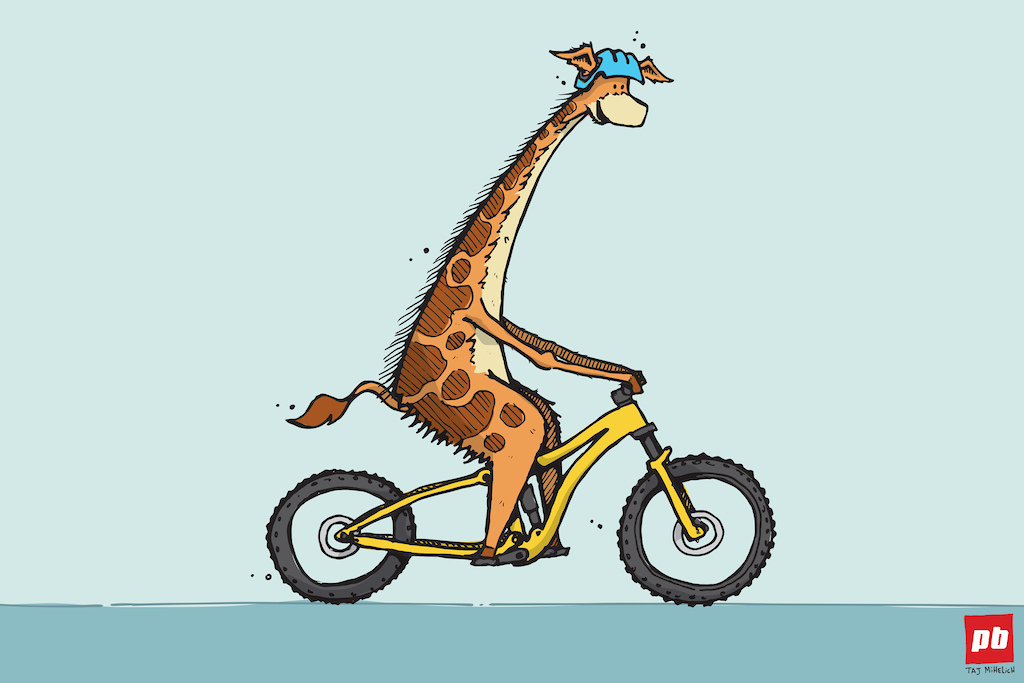
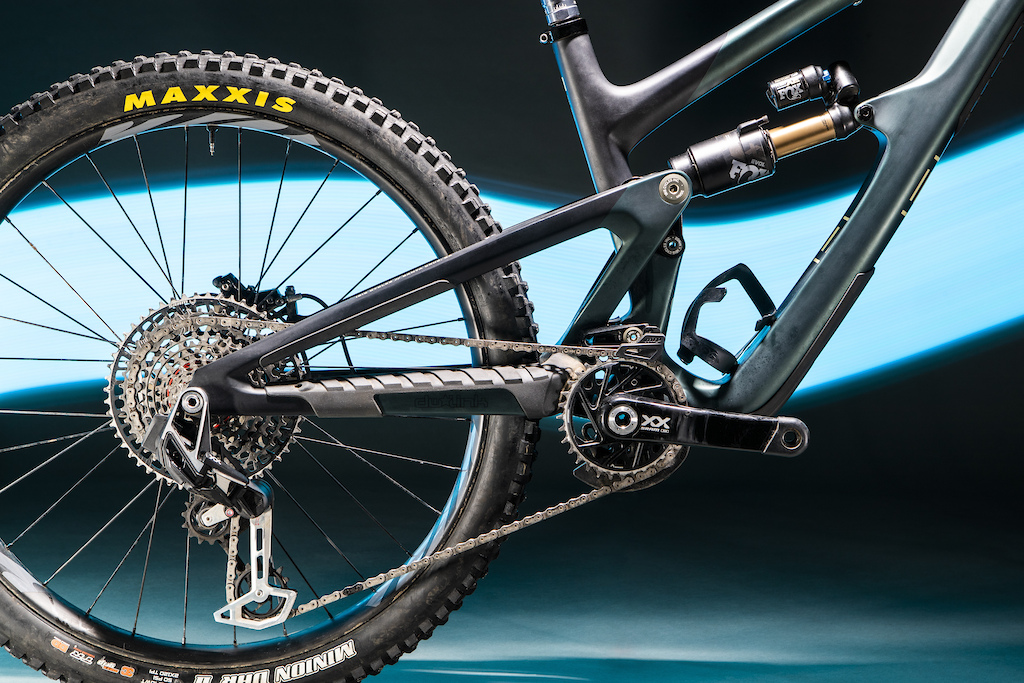
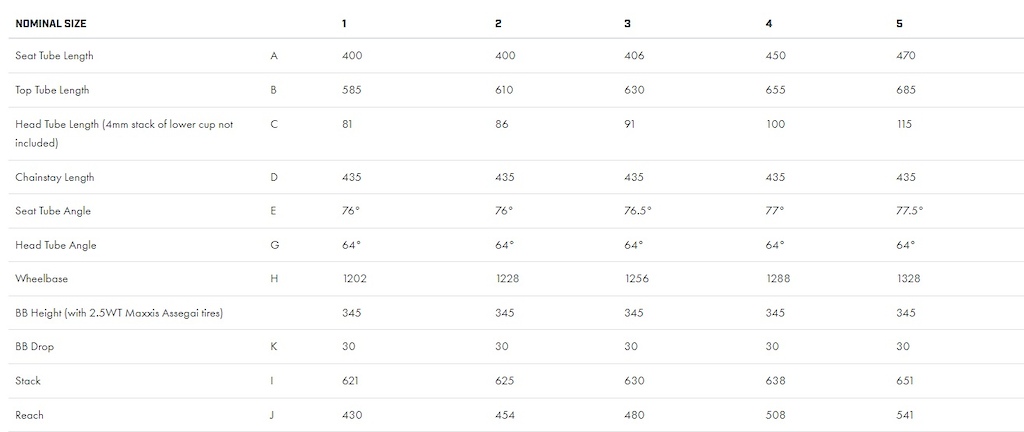
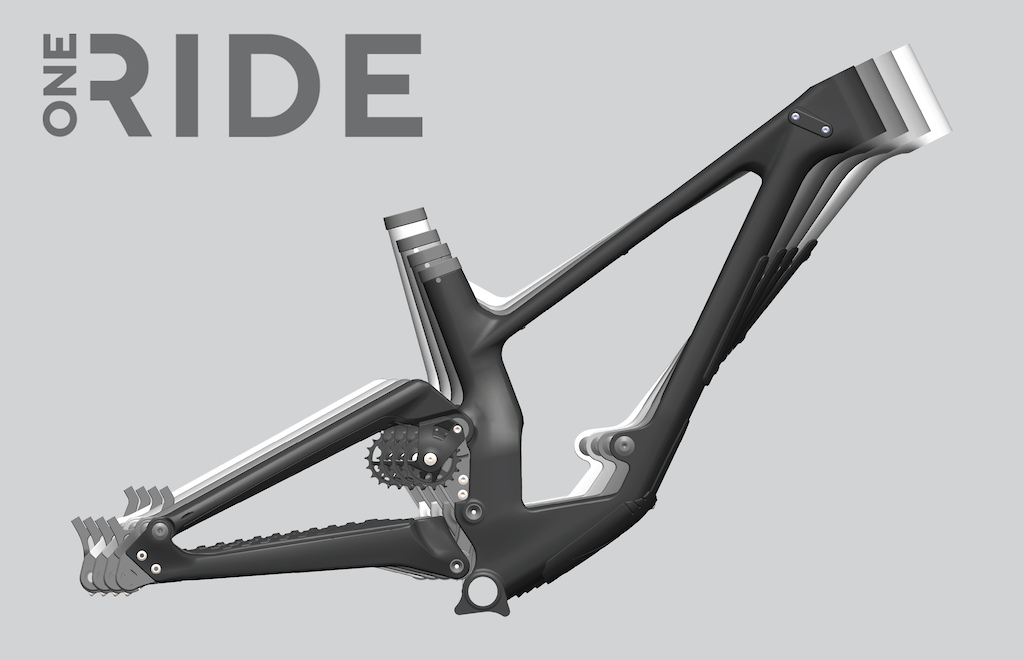

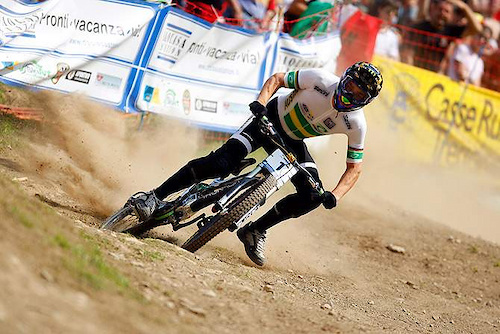

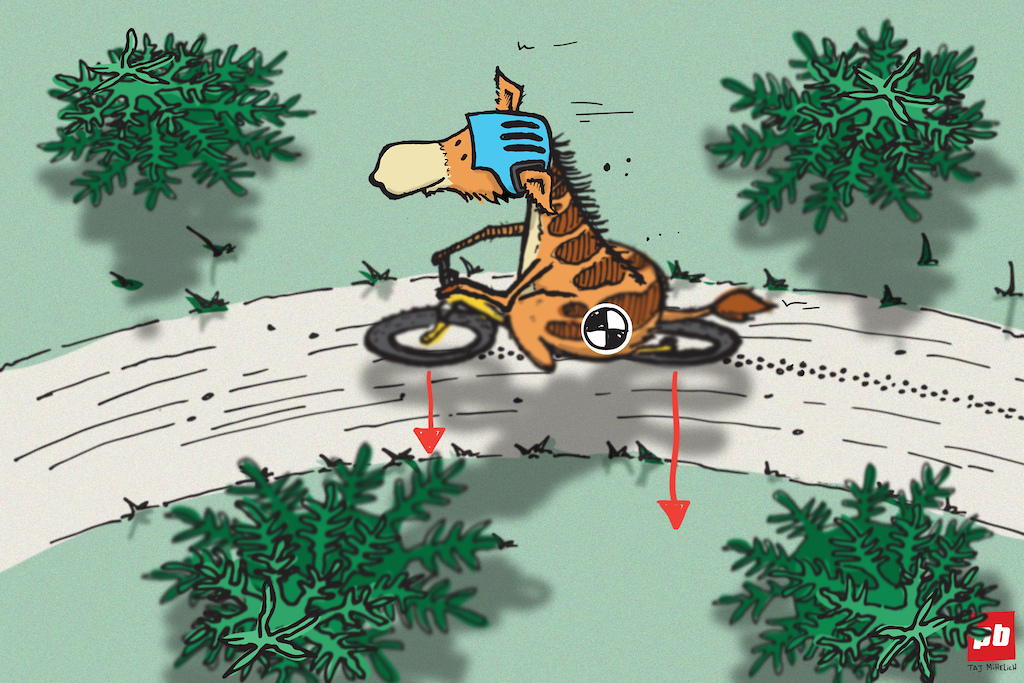
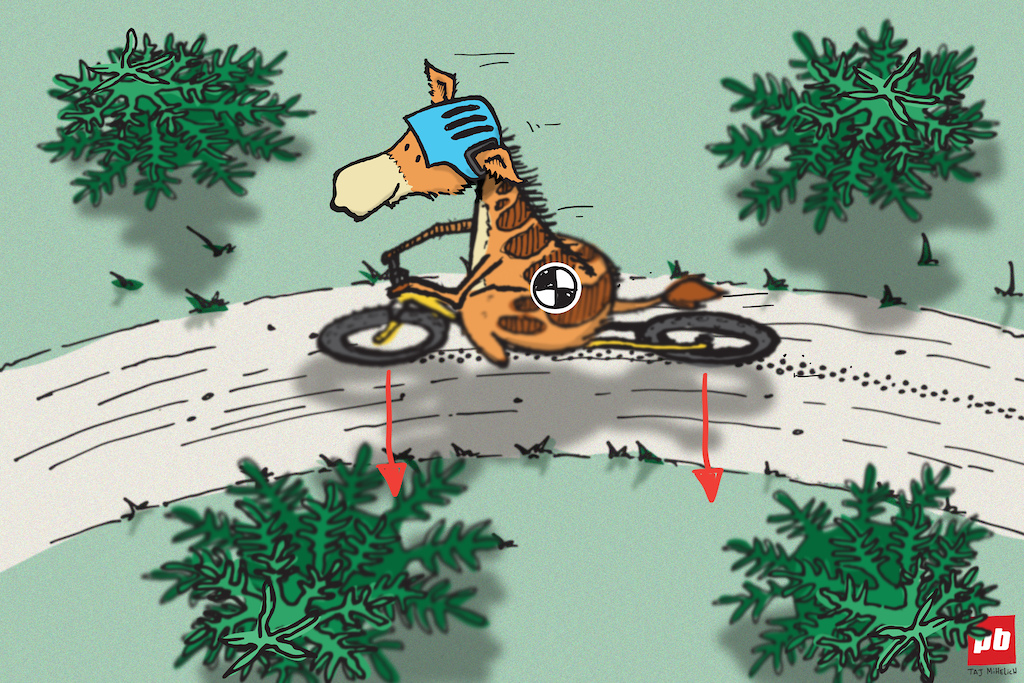



Only issue with adjustable ones is that I believe there recently was a bike released that was adjustable (flip chip I think) but it could only run Transmission in the rear position. Probably just modular/replaceable ones would be best, plus it means bike makers can sell more stuff!
If I want to do a 5 mile ride with lots of tight twisty stuff I could see shortening the rear end up.
Iff I'm going on a 40 mile (long for me) ride where I know I'm going to be exhausted, and won't be trying to throw the bike around every turn as fast as possible, then lengthening the cs' would be nice, plus the added stability on climbs and descents would be great. . . it would also be great if you could change CS without effecting bb height at the same time!
Or you can just get a bike that's somewhere in the middle and learn to live with what you gots. . .I guess.
Love Banshee!
Modular chainstays are also a must in combination with size specific chainstays.
So far, the issue was: Tall designers used to built bike with long chainstays amd small designers used to built bikes with short chainstays…… selfishness!
I did buy the 142 dropouts but last summer I destroyed my wheel at silver Star and the only spare I have is 135 so, change the dropouts.
And of course the 142 /27.5 dropouts are longer and I can feel the difference when trying to manual but at the bike part it's definitely more stable. Modular is the way to go
to get a longer chain stays...
i suppose when your riding below your limits, and shralping and playing short cs feels more playful, but at full on where your tiptoeing around ever so slightly exceeding and smoothly correcting front end wash the longer chainstay loads the front end up.... and everyone thinks its just 5mm but its got around 1.8X the effect of 5mm change in front center.
I would love for modular dropouts/chainstay length flip chips to be more common.
However, I think that SRAMs new Transmission is making life hard on flipchips, because of how the deraileur mounts to the chainstay. Most of those only work with transmission in the longest position (RM Altitude is like this), or not at all (Raaw Madonna has a Transmission specific seat stay).
I'm worried we'll see less chainstay adjustment here in the near future as brands are racing to support the newest bling (like, the RM Altitude/instinct models, Kona Process X, etc).
As a Banshee owner I'll say "MORE DROPOUTS" (Also, see Kavenz V2, another good recent example).
www.mtb-news.de/news/forschungsprojekt-mountainbike-geometrie-3-8-was-ist-die-perfekte-kettenstrebenlaenge/#Sinnvolle_Gruende_fuer_kurze_Kettenstreben
My personal preference is also for short chainstays. Nothing against size specific ones, if they start at 415 mm for a size S frame and or no longer than 435 mm for an XL.
I’m 186cm / 6’1.5” and 440mm chainstays are my sweet spot.
Alternatively if you create a higher stack with stem spacers you are shortening the bikes reach, so you would then need to shorten the chainstays (following this philosophy(
If you raise your bars, you dont necessarily need to maintain as long of a reach. You can keep the same front to rear ratio.
In broad terms, if your bars aren’t as high as your seat at full extension, your bars are probably too low. Short chainstays help compensate for a low front end.
You should read this thread for a more detailed discussion on this.
www.vitalmtb.com/forums/hub/general-cockpitcontact-point-discussion
Tall guys don't necessarily want Bikes with crazy long wheelbases that can't get around corners.
Nor crazy long chainstays that take away all dynamic handling characteristics like being able to lift the front wheel off the ground
By this logic, I'm stuck riding a unicycle.
As always, great article @seb-stott.
Moving you hip forward or backward by five centimetres (and your maximum range to do this is probably about 30 centimetres or more) will have a similar effect to a proportionate change in chain stay length - and as stated in the article those often change only by 5 millimetres (not centimeters) over different frame sizes or between manufacturers.
I've found with suspension data acquisition that your normal weight balance on a DH is more or less 50/50, and you adjust your bike setup but mostly your body position to achieve that. It happens automatically, and modern geos just let you achieve that ~50/50 position without contorting yourself too much.
@GFozzz @FuzzyL : You're equally correct.
For example when you lengthen the chain stay on larger size bikes you’re increasing the leverage on the shock. Do we really want different size bikes to have a different leverage rate? Also your largest (typically heaviest) riders would have MORE leverage, which isn’t desirable. The caveat here is some frame manufacturers address this by moving the BB and pivot points in the main frame to increase the rear center while keeping the chain stay the same physical part across all sizes. There are manufacturers that choose both approaches. This should be covered in your article.
Also, for a sport based around downhill you can’t evaluate based on flat ground assumption especially for a sprung vehicle. There are just way too many factors left out here. If this was a fully rigid road bike sure this simple analysis is probably sufficient but for a MTB it’s too simplistic imo.
@SebStott shouldn't have even bought this up in the article. Geo should first be considered on a rigid bike to get the dimensional proportions "correct" or as the designer intends them.
The suspension kinematics can be sorted once the dimensions are sorted. Trying get to do both at once throws too many variables into the mix.
But none of it changes the central point of the article: Size specific chainstay lengths as implemented by most brands have negligible effect on bike handling. And non-size specific chainstays are not necessarily a drawback.
"You'd need to add 15-20 mm to the rear center per frame size if you want to keep the weight distribution the same."
This doesn't seem right. Usually the difference between sizes is around 25 mm. With chainstays being one third of the length, their proportional increase per size would actually be under 10 mm.
He later even argues taller riders tend to have a more forward-leaning stance due to relatively lower stack, which sound plausible. But that would be the opposite effect of what you're saying, so I still don't know how he came to the 15-20 mm number.
Also, watch out that not just reach changes between sizes, also headtube lengthening contributes to the overall wheelbase difference between sizes. I assumed the wheelbase differences between sizes would stay similar, but would be distributed between reach, headtube and chainstays changes.
At 1.93m tall I prefer a longer rear but have also enjoyed bikes with a short rear end.
I do find the ~2mm difference per size by some brands to be a token / joke effort, but I'm not a bike designer or engineer so what do I know.
STA , stack, ETT all play into it too.
And benefit for right sized chainstays is a more comfortable riding position on steep, technical terrain. A well balanced front:rear center ratio means you won't loop out AND you don't have to eat your handlebar when climbing. This is probably why you don't see stack grow proportionally with reach on larger sizes, especially when stay length doesn't increase significantly, or at all. If it did, the rider's weight would be shifted even further back while climbing in a neutral position, requiring the "eat the handlebar" position on lower grades.
There is no "right sized" we, as humans are incredibly adaptable, as noted in the earlier comments, Peaty, MInaar, and Chausson of 20 years ago would still destroy you, and 99% of us on their 26" wheeled bikes, that were super short. Its not holding you back, you, are holding you back, and you, along with all of us become obsessed with pointless details as the "reason" for this and that.
People are all different, ride different trails, on different terrain, with different styles and abilities. There is no "right sized" for everyone, which is why its great that theres so much variety out there
Sure, agreed people are adaptable. They adapt to short stays on steep climbs by "adapting" into a "eat the handlebar" position. I'd prefer to obsess with my "pointless details" that are an objective cause for an adaptation I don't need to make on my person and leverage the available variety that you're touting so my bike is more comfortable to ride.
I'm also pretty sure one of the main points of the article is that there isn't much effective variety in chain stay length out there when you look at the actual different ratio deltas between sizes.
Also; "it's", not "its". Sorry, but details matter.
Your entire statement is baseless and fallacious with the only semi-factual thing being that different trails are different.
In fact, I think im advocating for the exact opposite to what youre suggesting, I just think that we need to be more open to the idea that there is no "right" theres just "different". For different people, places, trails, styles, etc.
Mainly my point was that very little of the things we as mountain bike enthusiasts obsess about is either holding us back, or has that large an impact on our overall enjoyment. In fact, we seem to lean into every little detail as reasoning to why this, that or the other thing is better or worse, and defend that position with impressive vigour.
I just think we should move away from the hard and fast ideas of what we think is "right" cause its not a one size fits all.
All those mentioned were spectacular riders, but did so with much less faffing around than today. I wonder how those riders would do in the DH WC field of today?
Hear me out, the idea of what you believe is "right" or prefer, or whatever might suit YOU while climbing, but might not suit another while cornering, or while descending. With most modern trail bikes being asked to excel on so much, on such varied terrain, under vastly different riders, etc, ones preference for a longer, or size specific chainstay might be exactly the opposite of what someone else is after.
For me, and maybe I'm alone in this, its all a compromise, every little detail is a compromise in one way or another. Whats right for me climbing, has its drawbacks on flatter sections or the descents. I'd almost prefer to walk up than trade off some of those details, again, we are all different, and what suits me might be unacceptable to you, and thats cool.
The idea of an additional 5-10mm of CS length is going to make or break a ride is comical to me, but that might ruin your ride, and thats a bummer, cause I want you and everyone else to have a great time when they are out pedalling around.
We are never going to experience the same trail the same, and the pursuit of that seems like a fools errand to me (hell I dont experience the same thing every time I go riding) We all excel at different aspects, have different levels of skill and fitness, and prefer different types of trails. How would 10mm of CS change that, and why on earth is that the goal?
All that being said, if YOU want additional CS length, friggin cool, i dont judge in any way. If you want to feel more comfortable when climbing, thats awesome, go after that.
What I dont want is every bike manufacturer to think this is the way that things "have" to be. We are trying to make a recreational activity in the woods too specialized, and that makes it more expensive, and puts it out of reach for lots of people, and thats a shame.
My computer doesnt bother to add the apostrophe automatically, and I cant be bothered to go back to change it.
Some details matter, most are just something to obsess about, and eventually become points to argue about, and in the context of recreational activities for adults in the woods, that seems silly doesnt it?
I think I had a couple more semi-factual statement in my comment, but thats just like my opinion man, and maybe yours is different, and thats cool.
Not much reason to get to worked up about it
Not sure I looked into it too deeply, just going off memory.
Appreciate your fact checking, but you get what I was hinting at yeah?
We are adaptable animals, and the bikes of 20 years ago, were/are still very much rideable, regardless of what some think
However for bigger changes in geometry and suspension it really does take a good bit to adapt. A few months ago I broke a more modern hardtail and for the time being started to ride my 2007 Cannondale Prophet again. It really took a good while to exit a corner more or less where I intended to!
Same size rear stays or swingarm or triangle depending on design with modular 3D printed dropouts with open source 3D Print designs and material requirements.
Don’t like your existing setup? Print another.
Brands can charge for the design files and lay-off the manufacturing to the consumer, reducing sales price and increasing post sale engagement.
And like the article says, it’s all about proportion. Bikes with shorter front centers (steeper HTA’s and shorter travel) don’t need/want as long of a rear center.
I think people who value speed/racing tend to prefer longer stays than people who tend more in the “jibb and pop” style of riding. I mean, look at all the DH bikes with super long stays (Supreme, Legend , Supernaught, etc), then look at what bikes the Ride or Die crew or rampage riders are riding (sizing down for ease of throwing around, etc).
The other thing is what long chainstays allow for. My first bike had 425mm chainstays, and a low stack height (I assume to keep weight on the front). My new bike (Banshee Titan) has 452mm chainstays, and has a much higher stack height, because the longer stays put more weight on the front natively, allowing the stack to grow. And more stack helps in the steep stuff, and helps with the manual situation a bit.
Doctor, will I be able to play violin after this operation….
Obviously my chain stays are far too long. ;-)
I think that geometry is in an interesting place. The industry seems to have a found the limits of longer/slacker and will be doing smaller refinements vs the major changes that happened in the last 6-7 years. Seeing bikes get proportionally longer rear centres with higher stack heights is a trend I want to see more of going forward. The new v10 has 455-460-465 adjustment in the XL via 3 position flip chip which I think should become a standard. Let the end user figure out what they want with options to change it themselves.
Creating a properly balanced fit and weight bias for taller riders.
Which the rider will then decide if they want to... bias (slightly compromise) their particular setup towards either climbing or descending.
And it seems like - with rare exception - the only part of the available arsenal that gets thrown at this problem is more reach, and more chainstay length.
And occasionally seat tube angle. but that debate seems to have settled down into the 76° - 78° range, with plenty of available fore and aft adjustment for most anybody.
So this current debate seems to dictate that we create the supposedly ideal (theoretical) proper bike fit for a 6'-5" (195.58cm) rider, by only using more reach and chainstay length.
And by following these supposed ideals, you could quickly end up with 520+ reach and 450+ of chainstay length. Without my geometry calculator handy, and with today's slack head angles that's gotta be ~1300mm or more of wheelbase.
Now you've got a bike that handles like a 70's station wagon on anything that isn't plowing straight down the hill.
Yet, why is it blindly assumed that the best stem choice for EVERY rider is 40-50mm? And don't get me started on the 6'5" guy who thinks that the latest 35mm stem is a performance upgrade.
And for some reason it's also blindly accepted for many taller riders to automatically go with a stem in 0° (maybe 6°) rise, often with 2"-3" of spacers under the stem.
Does anyone ever consider how DORKY this looks?! Let alone how less-than-ideal this is.
Does anyone ever consider how much flex might be happening in this extra steerer tube length - especially with a 6'-5" 220lb guy torquing on a set of 800mm bars? And extra useless weight with steerer tube and spacers?
So the only direction we've been heading (we've been allowed to go) over the last handful of years since modern geometry has taken it's course, says that as the rider gets taller, his body mass can ONLY shift rearward, along with the upward that he has no control over - and this can only be addressed and compensated for with longer chainstay length.
Consider this: For taller riders, as the handlebar height (which is actually hand position we're talking about) gets taller, through stack height (headtube length), stem spacers, and handlebar rise, did you ever think about how far rearward your hands, arms, and body mass are being pushed, further amplifying the effects of what this article is about?
Did you ever think about the "normal" hand position that the average 5'-10" (178cm) guy or gal has on the average large bike, in vertical relation to the front axle?
Think about how much further rearward a 6'-5" guy's hand position is once you get your stack, stem spacers and handlebars up to the altitude you want them. Which, along with their mega seat height, has their center of mass WAY BACK over the rear wheel.
What if the real sweet spot for taller riders - along with modest (500-510mm?) reach, and maybe 10mm more chainstay length), might be in moving their body mass... not so far rearward, as dictated only by the seat tube angle and how high the seatpost is extended, but instead use a strategic amount of stem rise and reach, along with a similar amount of handlebar rise to get their hand position somewhat further forward. Thus allowing for easier control of weighting the front tire.
So here's what I'm proposing.
And trust me here... the world will not stop spinning on its axis if you go over the 50mm line on your stem length. Taller riders will have more than enough extra arm length to compensate for a bit more stem length. It's a non-issue.
**A case study of sorts**
I have two lifelong friends who are 6'-4" to 6'-5", 210-215lbs, who have always struggled with finding or creating a bike that fits them properly, feels right, climbs well, and inspires confidence.
Modern reach numbers have gone a long way to help their situation. But they were still struggling to find something that truly felt like THEIR bike.
So one of them asked for my help in creating the mythical/magical ideal bike for him, starting with a blank canvas (which doesn't mean a custom frame).
In watching them ride their current bikes - both of them being Horst Link arrangements - the first thing I noticed was how deep into their rear travel they would run / wallow. The "chopper" effect was always there, extremely so with their height and rearward weight (shift).
Don't get me wrong, BOTH of my bikes are Horst Link, and for certain riders and situations, they are awesome. 5'-10" 155lb me thinks so.
Always balanced and active, predictable and plush. But you know the downsides that come with the uphills, and the Band-Aids that we have to accept with Horst Link bikes, be it the blue lever, or on my Scott Ransom the REAR ONLY Twin-Loc (which is actually VERY effective in controlling the wallow and raising the bottom bracket for climbs).
But Horst Link bikes may not be the best choice for taller and heavier riders, because all of the leverage and weight shift that their height and weight generates... just doesn't work so well on such an active suspension design.
I'm getting off track. But my point here is, maybe first choosing choose a rear suspension design that works better with your height and weight is the best starting point.
For my friend, our starting point was the latest model Ibis Ripmo. An XL has a modest 500mm reach, and it's reputation as a magical do it all bike is earned and well deserved. What about the horrifically short 435mm chainstays?
But a major key in my friend's equation is that a DW link design (at least Ibis' particular one) doesn't sit very deeply into it's travel, or at least doesn't respond so radically to the extra height and weight (shift). And it pedals and climbs like a raped ape.
So fast forward... all of the relatively Gucci - yet robust enough to handle his size and weight - parts were carefully chosen, the bike was built.
Yet the two most carefully considered parts were the stem and handlebars.
The goal was the aforementioned strategic amount of stem rise and reach, along with a similar amount of handlebar rise to get his hand position somewhat further forward. While hopefully using zero stem spacers.
For the stem we chose (oh, the horror...) a 25° x 80mm Profile Design Aris, which is forged, safe, beautifully crafted and relatively lightweight (around 140g with titanium bolts installed). That got him part way to the hand height he needed.
For the other part, we chose a set of Specialized S-Works Carbon DH bars with 38mm rise, weighing a reasonably light 235g. We specifically chose 31.8mm.
You may be thinking that this combo would look gangly and awkward. The 80mm reach NUMBER on the stem may remind you of the early days of MTB, and the 80-100mm tillers that we used to run.
But, however they measure this 80mm appears to be NOT on the 0° plane, but along the 25° plane. They also have 60mm and 70mm, which look very normal ACTUAL reach, with some extra rise.
So it looks remarkably natural, and along with the bars - in using both of their rise, reach and sweep to get the grips up to where the hands want them - looks remarkably correct... and actually ELEGANT. You have to see it to believe it, especially watching a 6'4" to 6'5" guy ride by.
"Well yeah... how could it be any other way?" was my reaction
Fast forward... as we're doing some final fitting and fiddling before the maiden voyage. Only a few experiments were made with the fore and aft position of the saddle, simply 5mm each way to try it, and a bit of handlebar roll for personal taste.
The first test ride? It was an absolute revelation to my friend. Never before has he so instantly felt comfortable on a bike. Instantly felt properly centered (weight biased) between the wheels.
The next few rides - after fine tuning suspension, saddle tilt etc - produced similar WOW! moments. To him, no bike has ever felt so automatically comfortable, confident, flowy, and connected directly to his brain.
I've since done the same experiment with my other tall friend, this time starting with an XL Ibis Ripley V4. Same bars and stem, nearly identical components. The results were equally mind blowing for him.
So rather than knocking it, or dismissing this out of hand, maybe give it a try.
Are you less tall (6'-1" to 6'3"), or want to split the difference? Give a 17° FSA V Drive stem a try, in 60mm or 70mm reach.
For the extra 10-15mm of actual effective stem reach that we're talking about, I'm suggesting that taller riders should be including this variable within their experiments to create the best possible front to rear weight bias, rather than giving it all to longer chainstays.
Also, at which point, and measured within which plane is this "in front of the axle" happening?
Have you considered that your handlebar sweep (creating your actual hand position) erases all of this?
Even on one of my bikes with a 60mm x 17° stem (equals zero spacers), my bar sweep brings my hands back slightly behind the wheel axle (figuring for the forward axle offset), and approximately equal to the steering axis.
You could have an absurd theoretical 150mm stem, and as long as the equally absurd handlebar sweep brings your hands back to their ideal position...
Bottom line, for taller riders, stem rise and reach should be one of the variables in play, rather than short or shorter stems being a religion that cannot be questioned
Banshee dropouts ( in the shop i used to run) solved so many problems , that certain customers asked how/ if / why we couldnt and if we could use them in all bikes…..
the idea is actually really good, so big time 2013 kudos to banshee ….
With so much of THE MOUNTAIN BIKE pretty sorted, the stand out development to sell ALL OF US ( the freaks and hard core, the nerds and absolute shreddiest of shredzzz) newer and greater bikes each hear is either gonna come down to ( you decide with your dollRs ) new electronic gadgets or supreme dialed maybe adjustable maybe not perfect geo for that certain buyer.
Given the choice of exact same dirt bikes i chose the more expensive orange one because the seat hight was taller and the fork was damped better for a bigger rider. If that means anything to a product mgr, the austrian moto product mgr won that day for both of us……
Bikes are so good right now!
Thinking of BMX, chainstay length is a big part of the bmx handling. mostly for how the bike accelerate, pumps and gets airborn (think race bmx vs trail/street bmx). MTB is a mix of flat cornering, berms, jumps, rocks, .... Defining a golden rule based on grip or flat corners only/mainly is definitively not the way to define the single truth. It's the beauty of MTB geos, it's always a take on how you want the bike to handle and toward which riding style you push it.
An Idea for Seb, take two similar geo hardtails with only CS length that change (XC vs dirtjump), go on a pumptrack (tires on the ground, not even jumping), and see how the CS affect the pumping rythm, super intersting comparison and this difference will be found again when you pump and push in a MTB trail.
There is also the "window of movement" aspect. Weight distribution pushed too much to either end means you have less freedom to make adjustments before going outside the window of viable movements. That 25/75 distro not only means the rear is more likely to slip, but also that it would only take a small movement rearward to push it well beyond 25/75 and force a slide.
Or a loop out: you didn't talk about climbing at all...
He's also a ridiculous whiner.
Dude moved into a dilapidated farm house in the Italian countryside for the cost of "a few ebikes." Of course shipping and support is going to kind of suck when ordering DTC. There is a downside to moving to places like that.
The mechanical issues he has (chains falling off, loose bolts) would frequently be handled by a good shop mechanic, yet he complains he doesn't have a crank pulling tool or a brake mount adapter as though that's the company's fault. Most of his problems would be sorted in a day at a decent shop. Yet it costs him "weeks" of time off the bike for every problem.
He takes no responsibility for his own role in these "sagas." Still doesn't mean his observations are bad, but he's supremely biased by believing his unique preferences are somehow universally "right." Dude gets high on the smell of his own farts.
Yeah, Ebay had some warnings about even shippping things through the entire country of Italy. His new Nicolai frame arrived completely scratched up.
I have several bikes and one has a 22mm longer chainstay than the rest(average lets say) - I can notice the extra on the rear instantly, the bike is much more lazy on slow trails etc - it also cant be ridden hard or aggressively or the back end just slides around - however this can also be good on some steeper corners as you lean forward and the rear snaps down and around.
i also find it harder to ride steep tracks as it feels like the rear is still back up the hill and its pushing me forward.
This passage from the article sums it up perfectly.
Legit. Seb is always giving proper content to read and learn how to improve your setup. With proper backing information to support his thoughts. Need to give credit where it due. Rest of PB staff please take note. Dont care about you not wanting to ride with other people or if you are late to ride.... Or commenting on what people do with their personal lives on youtube.
Betteridge's law (of headlines) is an adage that states "Any headline that ends in a question mark can be answered by the word no." The sweeping generalization refers to the poor journalistic practice of writing sensational headlines in the form of a question to compensate for the author's lack of facts.
Next year Pinkbike starts its new "Top 10 Reasons Riders are doing this..." Buzzfeed format.
Flat terrain, slack HA, sure longer stays probably help but what are you optimizing for?
For other stuff, some components have 'weight limits' but guess the extra cost with batches makes it uneconomic.
A 420mm chainstay on an XS should not be on an XXL frame. Perhaps have 2 unique rear ends for XS-M and L-XXL frames, but put a flip chip in there? That way you can run something like 420-430 and 435-445?
Interesting to see smaller riders on XS-M frames looking more "in the bike" and larger L-XXL riders being "over the bike". Stack rarely grows proportionately with reach, which also needs to change.
Chainstays are still on the shorter end. ST angle needs to go hand in hand with CS length. If you're tall enough, you can quickly negate a longer CS by having a slack ST.
Three main things that are missing, which are critical pieces on information. First thing is the individual person who rides the bike. Depending on their body proportions, specifically leng length compared to torso length, arm length, etc., the weight on each tire will be different proportionately. Next is riding position. They came up with this as if we are all just sitting in the saddle. Different riders weight the bike in different ways. After a few rides on a certain bike, I naturally lean forward more on some bikes to weight the front wheel. Then we get into constant differing terrain. And we haven’t even gotten to how the individual sets sag.
Basically, there’s not much data here to come up with any real conclusions other than different people have different preferences based upon many different things.
I have a question: considering we are alternating between hard and soft surfaces, do you think having a more even mass distribution can bring more predictability?
Since we will get instances where our wheel will get more or less traction than on a normal surface, a more uneven share of mass also brings a more dramatic change in traction?
I own a V1 large Forbidden Druid and the longer dynamic chainstay has been a revelation to me: I feel the bike is a lot more intuitive to ride than what I'm used to.
I've tried longer chainstay and other than on tight and steep stuff, I feel like I've not reach a to long chainstay.
Nice article though, and a great discussion topic
In my opinion, the size-dependent swingarm length more equalises the suspension characteristics between sizes. Especially for a tall person and a very short person it will make a difference. The greater stability of a longer bike for a tall person will also make no small difference. Remember what it was like to ride a short bike and a 26" wheel?
I'm thinking of people who are +180cm (I'm leaving out the geo).
In addition to this, brands for more conscious riders could have a mix option. If you can already order a bike for yourself and select parts, why not make different swingarm lengths available? I was talking about this the other day with a friend who designs bicycle frames. Although I'm not entirely convinced about it there is a point.
I'm riding Nukeproof Mega 290 size L and this bike have 450mm CS, reach 475 and i thing its great proportions for L and XL size.
I guess bikes should just come in one size and save everyone a bunch of money. If the rest of the bike doesn't matter, then it's only a matter of time till another silly article comes out about the front not making a difference.
"Planted" is trendy right now. That's great if you're racing or have no bike skills, or just like that set up.
CS is a key factor in how a bike manuals. It isn't the only factor but it's one measurement you can use at your desk to have a guess how the bike will ride.
All I know is that I am fairly tall at 188cm and love a 435ish CS. Tried 455 ones on a long bike and it was just dead.. fast but dead. So when racing blind it was harder to pick lines. I kinda just held on the the damn thing instead
I've been buying high-end bikes since before 2010 and I usually always found upsizing made for faster bike, until the SB150 came around. The size M rode no worse than the size L. That's when I rediscovered the "CS length to WB sweet spot" in 29ers that I used to enjoy with short CS bikes and smaller wheeled bikes.
The reality is: most short travel bikes and smaller size bikes have too much forward weight bias for my tastes (in size S/M). Seeing Enduro geo on short travel bikes is a great sign to a shorty like me, since the WB is getting longer to balance out the already too long CS (which needs to be so for tire clearance). For tall folks, I can see the WB getting far too long if the CS don't grow with it. In fact, I've noticed a trend where shorter folk gravitated to slacker bikes with long forks and taller folk would brag about doing the same stuff on their short travel bikes that shorties did on big bikes.
Anything over 420 feels pretty awful to manual tbo.
I would appreciate if someone could rephrase or explain it to me, since I am not a native speaker.
Sizes:
Long
Longer
www.pipedreamcycles.com/shop/moxie
I wonder if the same applies to stems? Does anybody make a stems longer than 35mm?
The best bike I have owned is the Mondraker Summum Pro Team L 2013 with 445mm chainstays. It felt good because it was stable at high speed, even if the cockpit was very cramped and seat angle terrible. For being a 26er it was a long and stable bike. Someone did a speed record on this bike down a mountain.
Now I prefer 29er or Mullet and the bike needs to be even larger.
When I actually measured weight on each axle, using scales under each wheel in a standing pedaling position, I couldn't find a single formula that could match my results. I did find a general pattern though, regarding the sweet spot bikes in my quiver... with a little bit of rounding, I found that my favorite bikes had WB/CS lengths of: 1230|435, 1250|440, 1210|430, 1190|425... it's easy to extrapolate the pattern, and predict which bikes would be in the ballpark. Doesn't make sense to me, but every chance I've had to test it has not yet left me disappointed.
Learning from this, I also feel that wheelbase dictated a bike's quiver-worthiness more than its suspension travel. I feel that I'd be happy rocking a 150mm FS with 1223 WB (Yeti SB150), 160mm FS with 1306 WB (Geometron G1), and another 140 FS with 1152 WB (Canfield Riot) np.
\